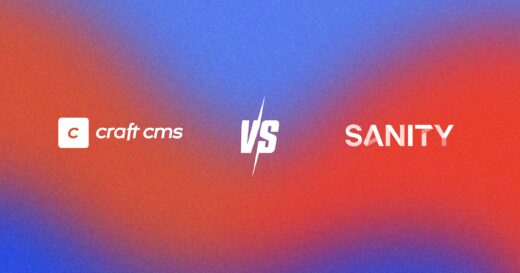The importance of research and planning when designing a purposeful website
6 min read

Creating a successful website involves meticulous planning and research.
During this phase of a web project, we look closely at your target audience, market trends, competitors, and any valuable data to provide insight that informs changes to your new site.
Upfront research helps shape the whole direction of your project, ensuring that every decision contributes to an effective website that meets your business goals and supports your audience's needs.
This article provides an in-depth look at the critical components of the research and planning phase and how this brings you to a more purposeful and successful website.
Website Discovery Workshop
At Abstrakt, every project begins with a Discovery Workshop.
This brings together all key stakeholders involved with your new website and sets the stage for a collaborative session. Everyone has their say, and everyone is heard. Whether face-to-face or over a video call, a workshop of this depth gives a clear understanding of your business and brand and identifies audiences and objectives to move forward with.
These hugely valuable sessions uncover the right approach to achieve your goals and enable us to define the project scope with an accurate budget and realistic timescales.
Using data to strengthen the user experience
An informed design stands a much stronger chance of succeeding with your audiences! That’s why we begin by analysing your existing site in depth so that every decision we make about your new design is backed up with data. Yes, our designers have years of design intuition and knowledge of best practices, but it is data that can bring us insight that is unique to your specific audience, content and industry.
Leveraging data through tools such as Google Analytics can bring us a vast range of valuable insights into user behaviour. Here are some examples of the data we can uncover and how it is useful in planning a successful website:
Audience Acquisition: Understanding where your visitors come from (organic search, social media, referrals) helps us to tailor content accordingly and meet their expectations based on prior journeys.
Demographics: Knowing things like users' age, gender, location, language, etc, tells us more about the people visiting your site, which can positively inform design decisions. This knowledge also allows us to see if you’re attracting the right people to your site and if you need to make changes to your brand positioning.
Interests: Discovering information about your visitor's interests, searches, and behaviour means we can tailor page design and content around the questions they may have or the needs they’re looking to satisfy.
Behaviour: GA allows us to track user interactions from their point of entry, the pages they visit and their eventual exit. This provides a huge understanding of the typical online journeys through your site. Seeing where engagements are low or drop-offs are high means, we can identify where to focus efforts on page designs and content and create optimised user journeys.
Conversions: Setting and reviewing conversion goals will highlight areas where improvements are needed to stay on track with your business objectives.
At this stage in the planning process, our UX and SEO teams assemble to achieve what is known as SXO (Search Experience Optimisation). Using SXO, we direct the right audiences to your website by combining SEO and User Experience for a more user-centric approach. We plan strong structural foundations for sitemap and discoverability, ensure the webpage and content meet expectations and support the onward journey.

Understanding target audiences
Understanding your target audience is one of the most important parts of planning a website and ensuring it brings results. One way to do this is to build out user personas for the different types of visitors you want to attract.
Understanding each audience type's preferences, behaviours, and motivations means designers can carefully consider and empathise with your users to design the best online experience for them.
Identifying user personas assists with planning intentional user journeys that guide future design decisions.
Gaining a competitive edge
Researching competitors and industry trends allows designers to identify what works well and what doesn't in the market. By learning from others' successes and failures, we can gain a competitive edge in design.
A close collaboration allows us to leverage your industry knowledge with our digital expertise to plan a successful website strategy that influences your design.
This research will help identify opportunities within your market, important trends, and pitfalls to avoid, but ultimately define the benchmark for a successful website in your industry.
Data-driven decisions
All of this research, insight and strategy are brought together to finalise the important details of a website, specifically how it is structured, the content needed, expected components and page layouts, and functionality requirements.
At this point, a typical website involves the following:
Information Architecture (IA)
A clear plan of how your new website content should be organised and structured to give your readers the best user experience and assist discovery in SERPs. A detailed website sitemap is created to demonstrate the full navigation structure and page connections for user experience and SEO.
User journey planning
Data and insights are folded into the user journey planning, which maps out how audiences will navigate your site to achieve their goals efficiently and intuitively.
Content planning
With the website structure and journeys established, we can determine the types of content to be included, ensuring each serves a specific purpose for your target audience and aligns with the website's objectives. It’s critical that SEO best practices are incorporated to guarantee content is search engine-friendly to improve rank and visibility.
Wireframing
The sitemap, user journeys and content planning inform wireframes. When design begins, they form a blueprint of your website and guide page layouts, behaviour and content hierarchy.
The project can move into the visual identity and design phase only once the client finalises and signs off the research and strategy.
Moving forward to a purposeful design
The research and planning phase is crucial in designing a successful website. It helps anticipate design challenges and ensures alignment with your business objectives and user expectations.
By diligently following this approach, your website design will be informed by data, centred around real users, and have a true purpose online.
If you’re considering a new website, our discovery workshops are interactive and collaborative to better understand your brand, business and audience. We create a workshop write-up of everything we identify, so if you decide we’re not the right agency for you, you can take those insights with you.
Want to make your mark online? Get in touch, and we'd be happy to talk you through our workshops and how we approach creating hardworking, performant websites.

Lucy Williams
A Principal UX and Digital Designer with almost two decades of experience. She loves balancing UX thinking with digital creativity to design innovative & vibrant products.
She has specialist knowledge in digital brands and sustainability.
Connect on LinkedIn.
Craft CMS vs Sanity
4 min read

Client Spotlight with Jonathan Eate
4 min read

Dot All Conference 2025
4 min read
